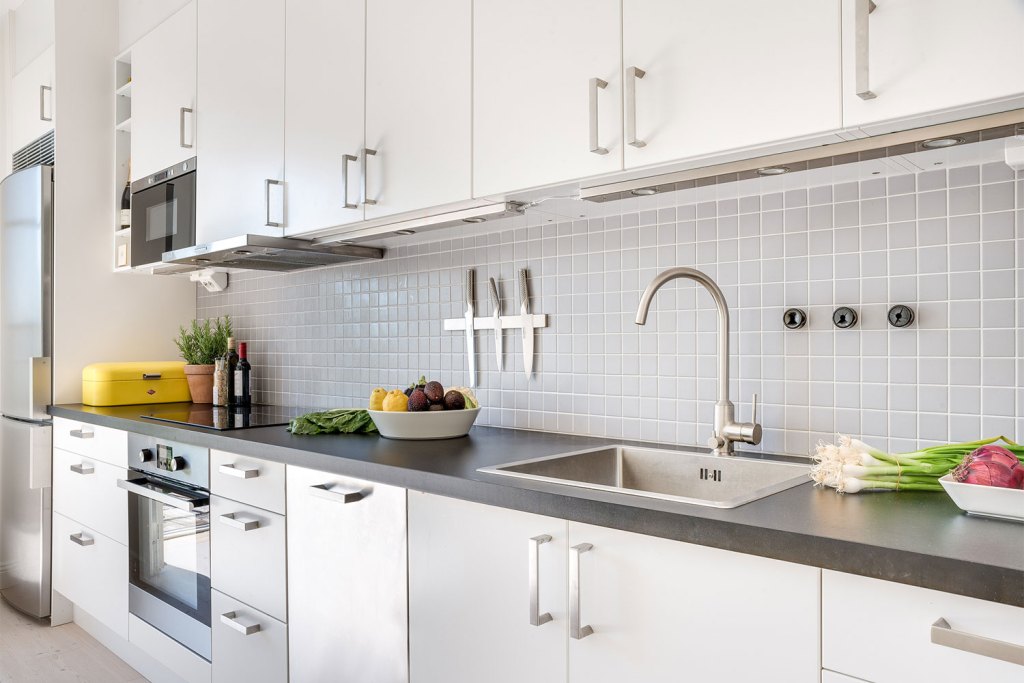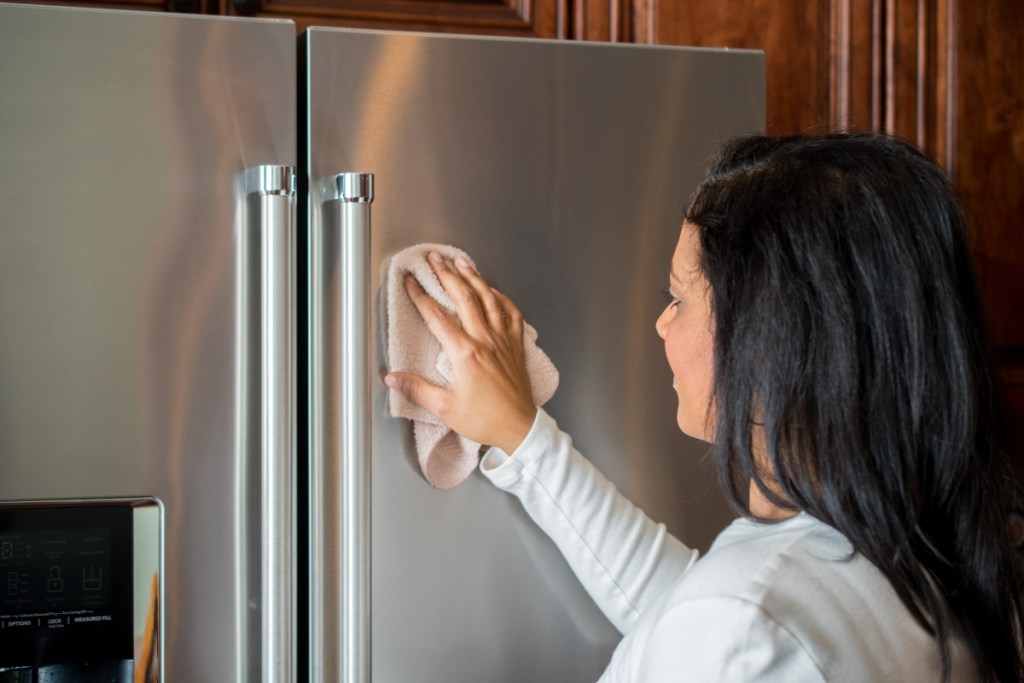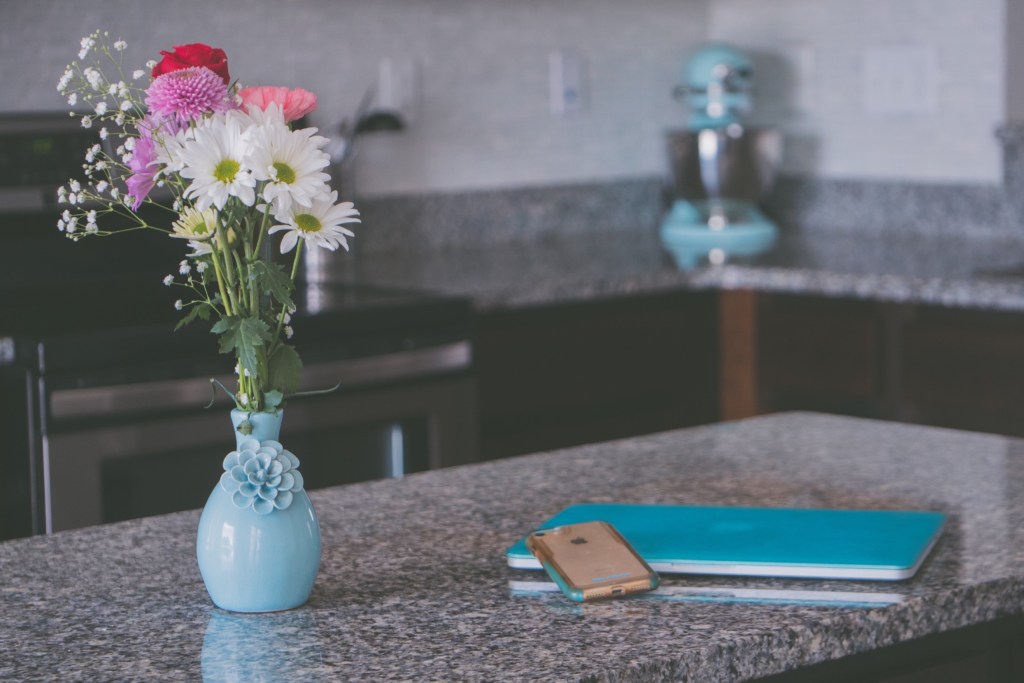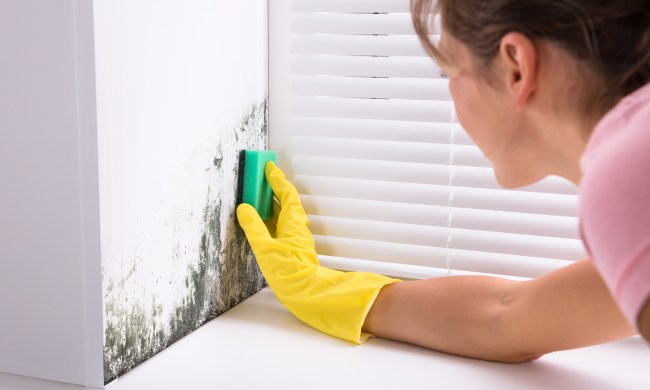
No matter where you live, your kitchen will always be a gathering space for you and your loved ones. When the meal is done, though you may notice your gorgeous kitchen cabinets, counters, and appliances have been exposed to cooking grease. Quickly tackling these drips and splatters is key to keeping your beautiful kitchen surfaces in good condition, but you need to know how to get rid of kitchen grease completely and thoroughly on different surface materials. Check out these tips to avoid long-lasting stains and damage to your kitchen’s surfaces.
A quick note on cleaning supplies — you should have most of the items needed for this project on hand already since most are required regardless of what you're cleaning. For example, a spray bottle or two is a good idea for storing any homemade cleaners. Some prefer to use glass spray bottles; however, there’s no problem using a plastic spray bottle from the dollar store.
Most of these items will clean grease off every kitchen surface without damaging them. Bob Vila’s recipe using Castile soap is recommended for those who are concerned about “chemicals you might not want around your food-prep areas.”

How to get rid of kitchen grease on kitchen cabinets
Kitchen cabinets are the easiest surface in the room to clean. No matter what they are made of, kitchen cabinet materials generally have coatings, sealants, or glass surfaces. They also get dirty very quickly from spills and splatters.
Murphy's Oil Soap is a great product that cleans and protects if you’re going to use a commercial cleaner and your cabinets are made of wood. If you'd rather create your own cabinet cleaner though, we've got you covered.
Step 1: Use a 50/50 mixture of white vinegar and warm water, then add two to three drops of dish detergent.
Step 2: Apply using your spray bottle and leave it for a minute or two. Then wipe it off with a soft cloth.
Step 3: Mix a paste of salt and vinegar for stubborn stains, and gently scrub the stain with a soft cloth or soft toothbrush.
A 15-page report by Denise G. Dias of K. State Research & Extension titled “Homemade Cleaners” states that this mixture is an all-purpose cleaning agent, a good surface cleaner and great for avoiding exposure to hazardous household disinfecting chemicals.

Stainless steel surfaces
There’s nothing like the look of polished stainless steel. It’s bright, it’s durable, and it just sparkles when it's clean. Until it doesn’t. Stainless steel shows everything from dust and grease to fingerprints and water spots. Keeping stainless steel surfaces looking their best just takes a minute if you do it every day, but you’ll need something a bit stronger if you don’t.
If you’re a person who cleans everything in the kitchen daily, your microfiber cloth will perfectly take care of your stainless surfaces. Just rub them down with the grain, and you’re set. If you tackle kitchen cleaning on weekends, an excellent product to clean the grease off stainless surfaces is Weiman Stainless Steel Cleaner & Polish. It’s like a secret weapon for your stainless steel.

Natural stone surfaces and countertops
Is your home graced with beautiful marble or granite kitchen countertops? These surfaces are usually sealed before being installed, but sealants must be applied regularly to keep the surfaces stain-resistant. Stone is porous and can be damaged with acidic cleaners and harsh chemicals. Using a lemon or an orange oil grease cutter on your counters may be tempting, but it’s important to resist that urge.
Blotting with clean, dry paper towels works best for a well-sealed countertop. If you feel the need to use soap, use a pH-neutral cleaner like Weiman Quartz Countertop Cleaner and Polish to ensure you clean the stone without acid damaging the counter.
Cornstarch is your best friend if you think the stone seal has been compromised, and you can follow the below steps to address the stain. Use gloves if you find that cornstarch irritates your skin.
Step 1: Make a paste of cornstarch and water using 1/4 cup of cornstarch and 1 tablespoon of water at a time until it has the consistency of a paste.
Step 2: Dampen the grease-stained area with a sponge by pressing gently.
Step 3: Apply the cornstarch paste to the area.
Step 4: Cover it with plastic wrap and press on it firmly.
Step 5: Using a toothpick, poke holes in the plastic wrap to allow drying. This drying process is what makes the cornstarch absorb the oil.
Step 6: Let it dry for one to two days, then remove the plastic and paste.
Step 7: If the stain isn’t completely gone, repeat the process.
Step 8: Once the stain is removed, clean the surface with neutral soap and dry thoroughly.

Concrete countertops
A modern trend in kitchen design is to construct countertops from concrete. It gives a sleek, austere look and feel, and the neutral color goes with everything. Similar to stone counters, concrete counter installers seal the surface before use. However, some people prefer a raw look without sealant. It looks good but is highly susceptible to staining, especially from grease and oil.
While the paste-under-plastic wrap method works well for concrete countertops, it uses different ingredients and a slightly different process. Where the cornstarch was allowed to dry under the perforated plastic in the process above, the acetone in the following procedure works on the stain under the plastic first without drying. Make sure you have proper ventilation to employ this cleaning method.
It’s important to note that acetone can damage some sealants, so make sure you know what type of sealant is on your counter before you begin. If you don't know what kind of sealant is on your countertop, apply a small amount of the mixture in an inconspicuous area as a test.
Step 1: Make a paste (the consistency of peanut butter) from baking soda, flour (or powdered sugar), and acetone.
Step 2: Spread the paste on the stain.
Step 3: Cover it with plastic wrap and tape the edges to maintain the seal. Leave for 24 hours.
Step 4: Remove the plastic and let the paste dry — it is during this drying process, that the baking soda and flour draw out the oils from the stain.
Step 5: Make sure the mixture is completely dry before you remove it from the countertop.

Butcher block countertops
To remove grease from butcher block countertops, start by blotting excess grease with paper towels. Create a mixture of warm water and mild dish soap. Dip a cloth into the soapy water, wring it out, and gently scrub the greasy areas. Wipe the surface with a clean, damp cloth to remove soap residue.
For tougher grease, make a paste using baking soda and water, apply it to the stains, and let it sit for a while before scrubbing. Ensure thorough rinsing and drying afterward. Periodic resealing with mineral oil can help prevent future stains. Avoid harsh chemicals that may damage the wood.
Always remember that prevention is the best way to protect your kitchen surfaces, but dirt and grease are unavoidable in any kitchen. Keeping some protective heat-resistant pads, lots of kitchen towels and attractive trivets will extend the life and looks of your stone and concrete counters, though even the best-kept surfaces will still need a good cleaning once in a while. Follow the steps above (and always do your research to avoid possible damages), and you'll be on your way to a spotless and grease-free kitchen in no time.



